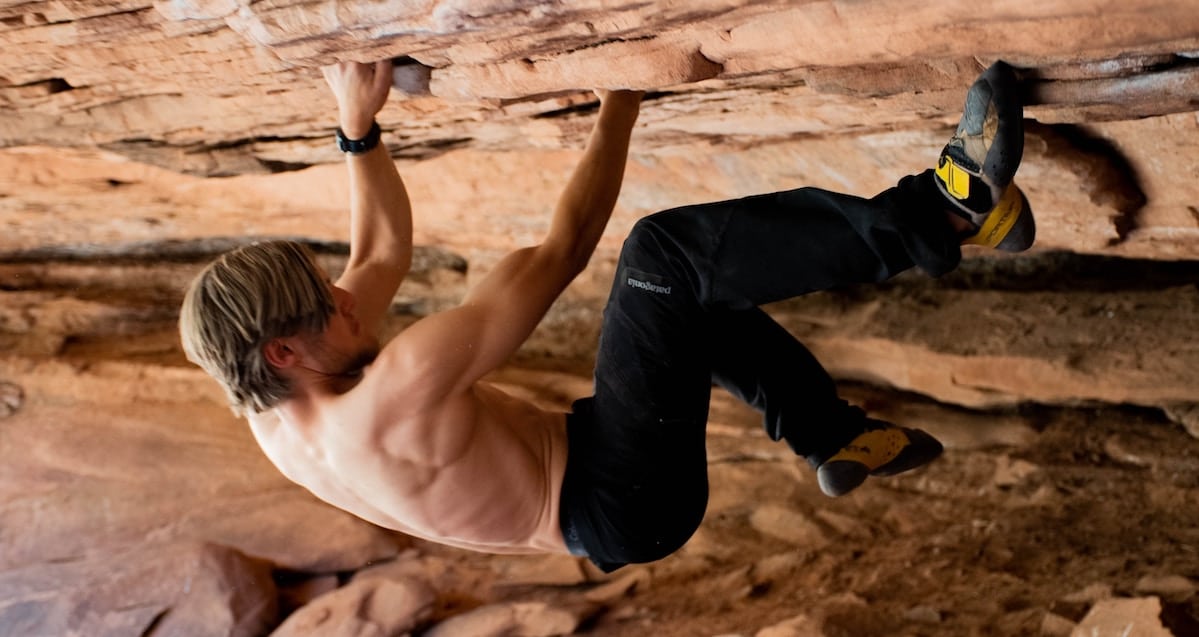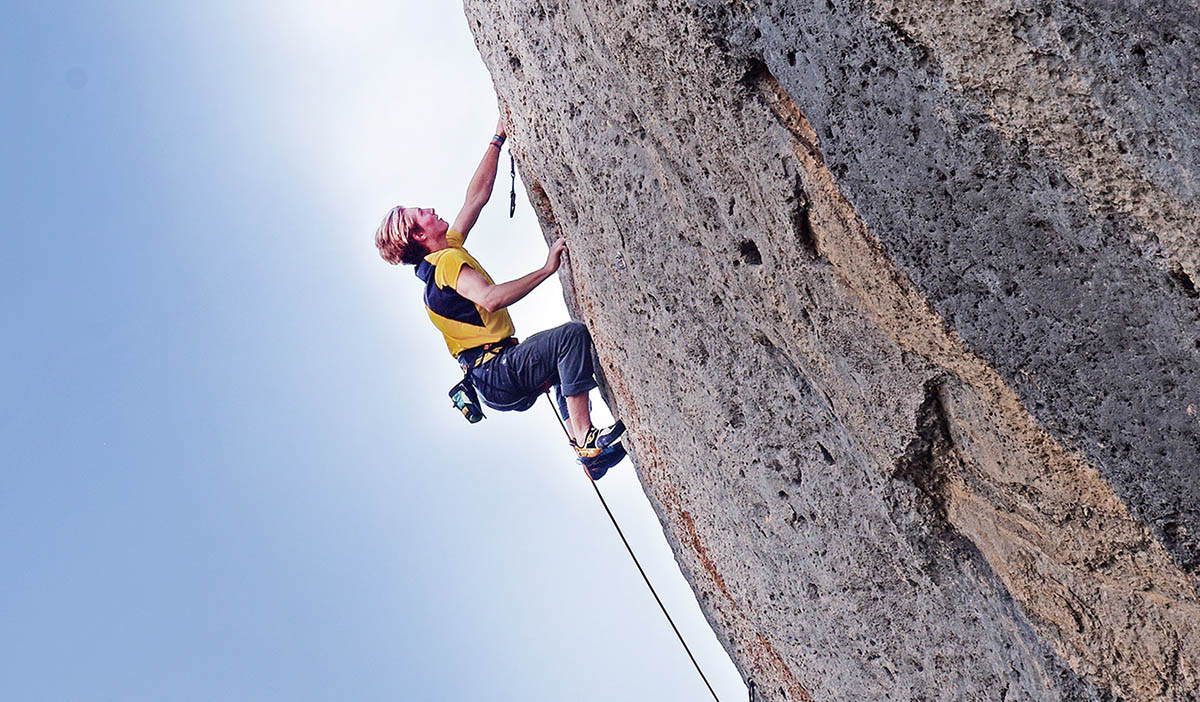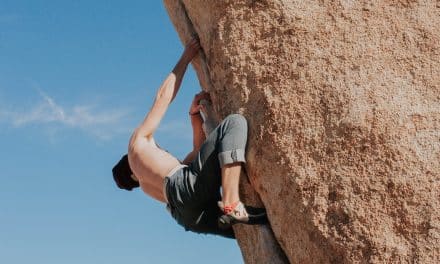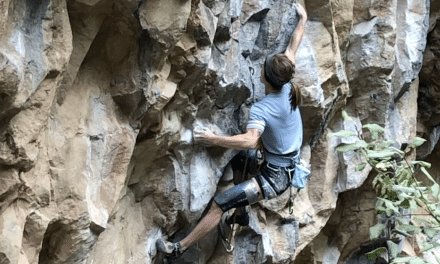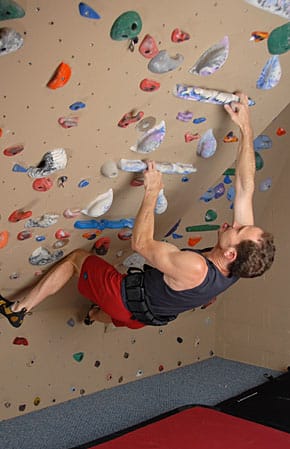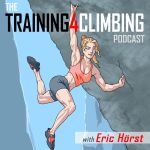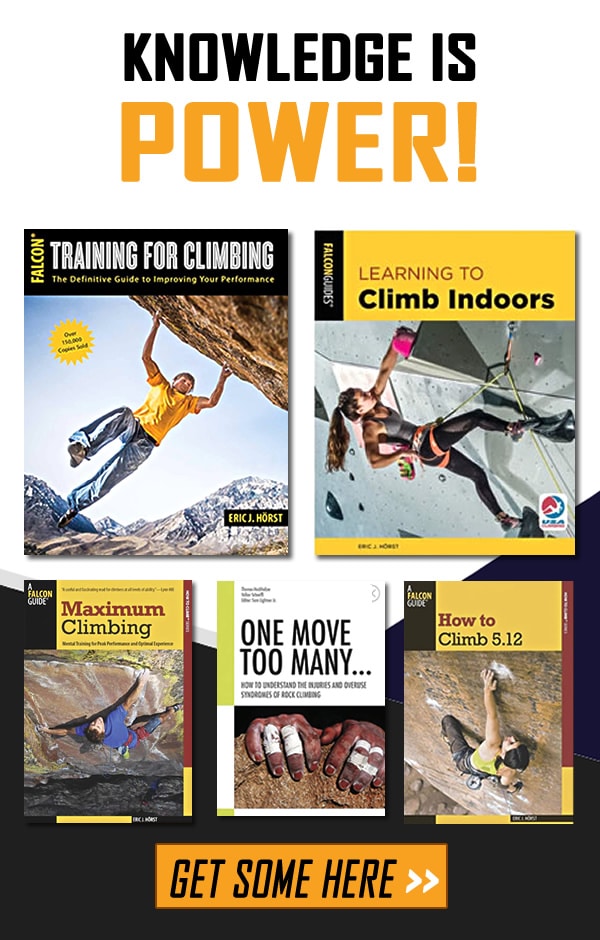Climbing harder isn’t always about working harder. Learn five techniques to help improve your climbing efficiency, conserve energy, and unleash your best work on the wall.
(This article was originally published in February of 2015, but these tips for more efficient climbing remain just as helpful today.)
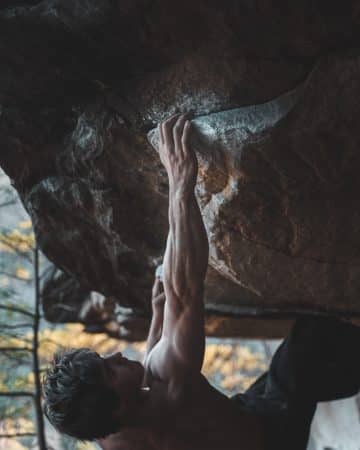
Consider the power of “perfect economy” every time you pull onto the rock. Photo by Cade Prior.
Perfect economy is the ultimate secret to success in climbing. That means figuring out the best way to execute each move—or an entire route, for that matter—with minimal energy expenditure. To understand that concept, think about a cat. Most of the time, cats moves in a slow, smooth, deliberate ways. Occasionally a situation demands a powerful, dynamic leap to maintain perfect economy. Make catlike the technical model for efficient climbing: smooth, quiet, leg-driven movements more often than not, but the ability to shift toward dynamic movement when required to most efficiently execute a difficult move.
While absolutely “perfect” economy will never be achieved in reality, it’s in striving for perfection that excellence comes about. Here are five attributes of highly economic movement to consider every time you pull onto the rock.
Quiet Feet
Quiet foot movements are one of the hallmarks of a climber with great technique and climbing efficiency. Conversely, feet that regularly pop off footholds or skid on the wall surface are typical of an individual possessing lackluster footwork and poor economy. For many climbers, noisy footwork is a bad habit developed over a long period of time. But that habit will prevent them from ever reaching their true potential because their technique suffers as the challenge increases. Learn to climb with good foot technique even in the toughest times so that you can maintain peak strength and coordination. This means concentrating on each foot placement, keeping your foot steady and firm to the hold, and standing up on the foot with confidence as you proceed smoothly to the next hand- or foothold.
Rhythm and Momentum
Like a dance, climbing should keep to a natural rhythm that utilizes momentum and inertia. Climbing in a ladder-like motion produces a steady step, reach, step, reach rhythm. However, a better rhythm for effective movement is often step, step, reach, reach. This allows the legs to direct and drive the movement.
There are obviously many other rhythms. Every unique sequence possesses its own ideal rhythm of movement. Momentum along the route also plays a role in determining that rhythm. This becomes especially important on difficult climbs with large spacing between holds. Consider how you use momentum in moving hand-over-hand across monkey bars at a playground, with each move blending into the next for a perfect continuity of motion. Make this “monkey bar” model of smooth, continuous motion your goal when climbing through strenuous sequences. This is the opposite of how many climbers tend to tackle engaging crux sequences in a slow, hesitant way.
Smooth Moves
Smooth, fluid movement is another hallmark of climbing efficiency. Stiff, mechanical movement points to poor technique and a high burn-rate of energy. One of the keys to smooth, efficient climbing movement is learning to contract only the exact muscles necessary for engaging the rock and directing movement. Usually these will be the muscles of your forearms, shoulders, abdomen, thighs, and calves.
To do this, periodically shift your attention to your antagonist muscles. Scan for unnecessary tension in the upper arms, hips and legs, torso, neck, and face that might be making the agonist muscle work harder and burn more energy than necessary. Take a few slow, deep belly breaths and visualize the tension flowing out of the antagonist muscle like air from a balloon. Mental imagery like this really helps the process. Next, return your focus to executing the next climbing movement. Continue alternating your focus back and forth between directing movement and directing relaxation.
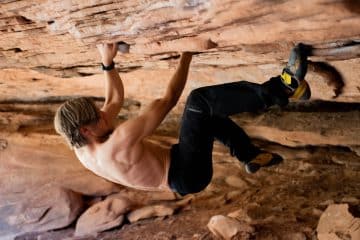
Consider how your muscles contract on the wall. What’s necessary for climbing efficiency? What can you release? Photo by Nima Sarram.
Pace
While an easy climb with large holds allows you to ascend at a leisurely pace, a crux sequence or overhanging terrain will demand that you kick into high gear and surmount the difficulty in short order.
When climbing near your limit, make it your intention to move as briskly as possible without any drop-off in technique (think skidding feet and botching sequences). Reduce the pace at the first sign that your technique is suffering. It helps to identify obvious rest positions ahead of time, and then aim to move from one to the next as quickly as possible. Determining the right pace on a given route is an ability that grows with experience. Practice climbing at different speeds and on different types of routes to foster the subtle skill of proper pacing.
Strive for Steady Breathing
A steady flow of oxygen to the muscles is important for energy production and recovery. Deep belly breaths get that job done best. Many climbers have a tendency to shift into shallow, rapid breathing as fatigue and mental anxiety grow. Worse yet, some climbers unknowingly hold their breath when the going gets tough.
Before every climb, close your eyes and take several slow, deep breaths. Feel your belly expand outward as you slowly inhale, and then allow the air to escape sparingly through pursed lips in a slow ten-second count.
As you commence climbing, strive to maintain the same slow rate of breathing that you initiated on the ground. This can present a challenge, since a dicey sequence or strenuous move can trigger irregular breathing patterns. In that case, use every rest position as an opportunity to reset your breathing cycle. Such proactive breath control is like topping off your gas tank. Do it frequently, and you’ll rarely hit empty.
Related Articles:
- Slowing the Pump Clock – 5 Stratagies for Improving Your Endurance!
- How to Keep Your Cool on a Challenging Climb
- 10 Do’s and Don’ts of Effective Redpointing
- 5 Strategies to Sharpen Your Concentration and Climb Better
- The Power of Pre-Climb Rituals: Preparing for Peak Performance
Copyright © 2000–2023 Eric J. Hörst | All Rights Reserved.

